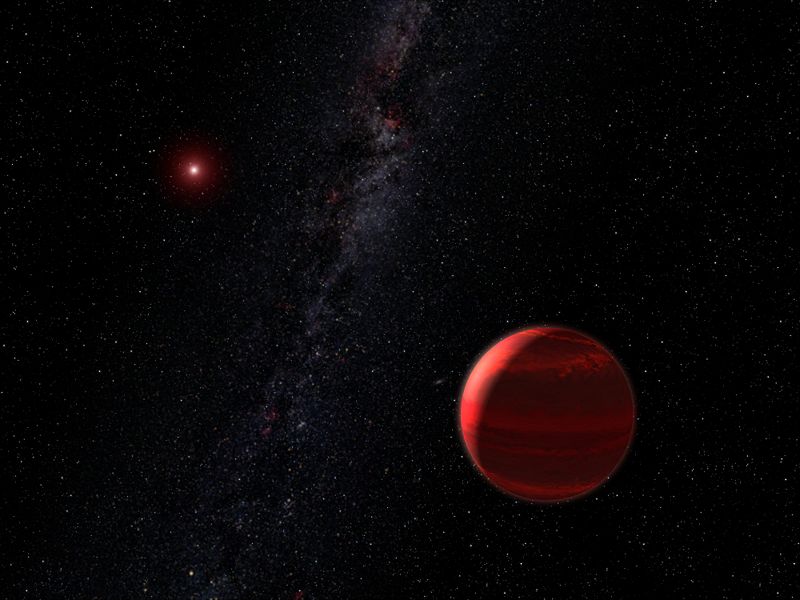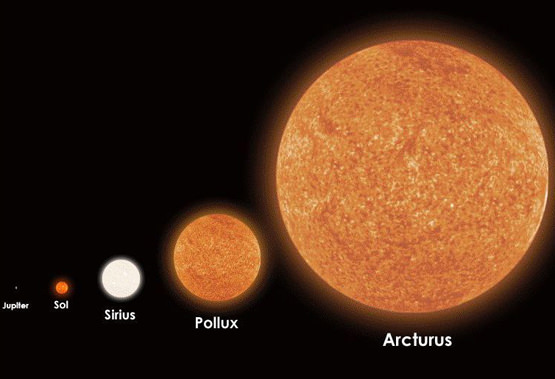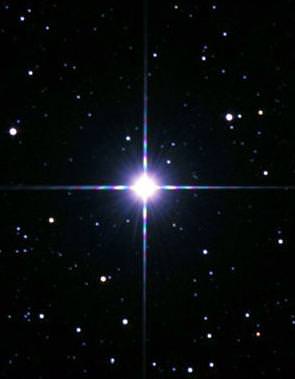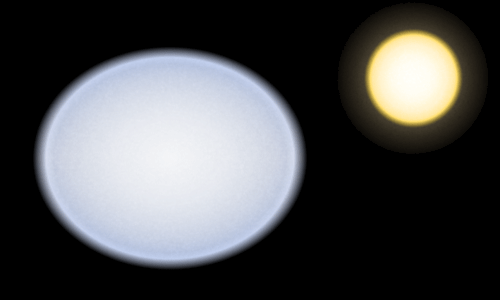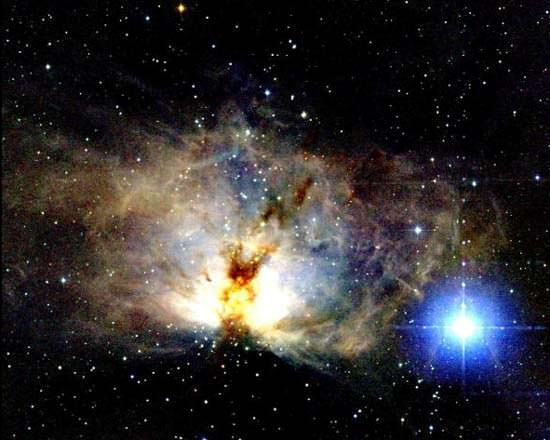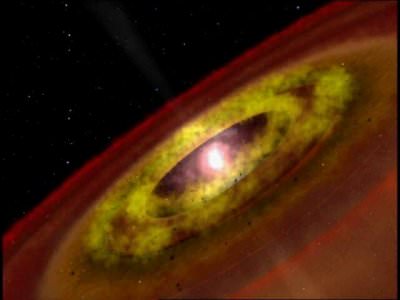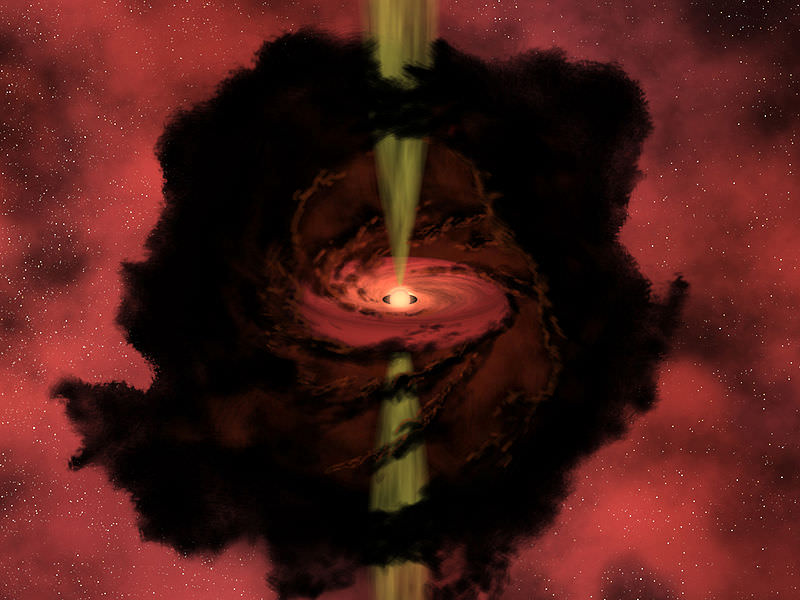[/caption]
Although they’re just hot balls of hydrogen and helium, stars are constantly changing over time. Studying star evolution is a whole branch of astronomy, and scientists are learning new things all the time.
To really understand star evolution, you’ve got to go right back to the beginning. All the stars we see today started out as large clouds of cold molecular hydrogen. Some event, like a nearby supernova, passed through the cloud of gas and gave it the kick it needed to begin collapsing. The gravity of the cloud pulled unevenly, and so it tore into smaller clouds, each of which would go on to form a new star.
In one cloud, the material streamed together to form a growing ball of hydrogen and helium. This protostar was enshrouded in gas and dust, and would actually be invisible from our Earth-based telescopes. As the ball grew, more and more material came in, causing the protostar to spin, and releasing jets of material from its poles. This accumulation of material takes about 100,000 years.
Once all the material was accumulated, the pre-star was hot and glowing; almost like a real star. But it wasn’t heated by fusion reactions in its core, but through the gravitational energy of the continuously collapsing material. This hot, young object is known as a T Tauri star, and remains in this state for about 100 million years.
Finally the temperature and pressure at the core of the star were sufficient to allow nuclear fusion to get going. Now the star would become a true main sequence star, converting hydrogen into helium at its core. A star with the mass of our Sun could stay in the main sequence stage for more than 12 billion years. More massive stars will last for shorter periods of time, while the tiny red dwarf stars can last for hundreds of billions and even trillions of years.
Eventually the star runs out of hydrogen fuel in its core. Without the outward light pressure from the fusion reactions, the star starts to contract, creating more temperature and pressure in the core. A shell of hydrogen around the core can now undergo nuclear fusion, and so it does, increasing the star’s brightness hundreds and even thousands of times. And in the core of the star, helium is fused into even heavier elements. This causes the star to bloat out to become a red giant. Regular stars like our Sun will expand to the point that they consume the interior planets: Mercury, Venus and even Earth. Stars with more than 20 times the mass of the Sun become red supergiants, expanding out more than 1500 times the radius of the Sun. Imagine a star so big it consumed the orbit of Saturn!
This extra fuel runs out and so the star collapses down on itself again. More massive stars will be able to do this trick multiple times, burning new shells and burning heavier and heavier elements. Eventually all stars reach their limit. The most massive stars, those with more than 20 times the mass of the Sun, will detonate as supernovae. Less massive stars will eject their outer layers and then collapse inward forming a white dwarf, neutron star or black hole. Our Sun will form a white dwarf; a remnant the size of the Earth with 60% of its original mass. Although initially hot, this white dwarf will slowly cool down over time, eventually becoming the background temperature of the Universe.
And that’s star evolution, from cloud of gas to white dwarf.
We have written many articles about stars here on Universe Today. Here’s an article about a supercomputer simulating star evolution, and here’s an article that explains what happens to the Earth when the Sun becomes a red giant.
If you’d like more information on stars, check out Hubblesite’s News Releases about Stars, and here’s the stars and galaxies homepage.
We have recorded several episodes of Astronomy Cast about stars. Here are two that you might find helpful: Episode 12: Where Do Baby Stars Come From, and Episode 13: Where Do Stars Go When they Die?
Reference:
NASA: The Life Cycles of Stars

